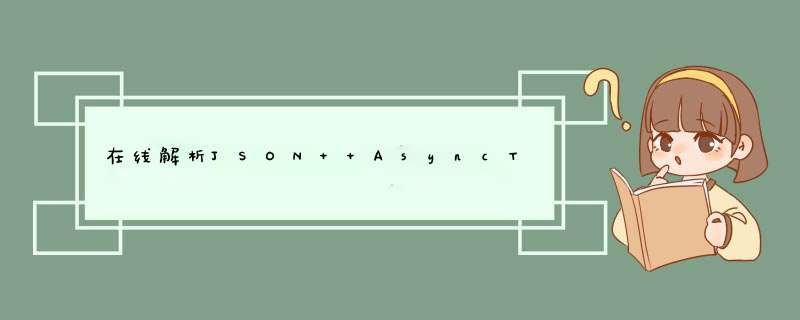
效果图:
获取并解析Json
package com.example.admin.quakereport;
import android.text.TextUtils;import android.util.Log;import org.json.JSONArray;import org.json.JSONException;import org.json.JSONObject;import java.io.BufferedReader;import java.io.IOException;import java.io.InputStream;import java.io.InputStreamReader;import java.net.HttpURLConnection;import java.net.MalformedURLException;import java.net.URL;import java.nio.charset.Charset;import java.util.ArrayList;import java.util.List;
public class QueryUtils {
private static final String LOG_TAG = QueryUtils.class.getSimpleName();
public static List<Earthquake> fetchEarthquakeData(String requestUrl){ URL url = createUrl(requestUrl); String jsonResponse = null; try { jsonResponse = makehttpRequest(url); }catch (IOException e){ Log.e(LOG_TAG,"Error in making http request",e); } List<Earthquake> result = extractEarthquakes(jsonResponse); return result; }
private static URL createUrl(String mUrl) { URL url = null; try { url = new URL(mUrl); } catch (MalformedURLException e) { Log.e(LOG_TAG, "Problem building the URL ", e); } return url; }
private static String makehttpRequest(URL url)throws IOException { String jsonResponse = ""; if (url == null) { return jsonResponse; }
HttpURLConnection urlConnection = null; InputStream inputStream = null;
try { urlConnection = (HttpURLConnection) url.openConnection(); urlConnection.setReadTimeout(10000); urlConnection.setConnectTimeout(15000); urlConnection.setRequestMethod("GET"); urlConnection.connect();
if (urlConnection.getResponseCode() == 200) { inputStream = urlConnection.getInputStream(); jsonResponse = readFromStream(inputStream); } else { Log.e(LOG_TAG, "Error in connection!! Bad Response "); }
} catch (IOException e) { Log.e(LOG_TAG, "Problem retrieving the earthquake JSON results.", e); } finally { { if (urlConnection != null) { urlConnection.disconnect(); } if (inputStream != null) { inputStream.close(); } } } return jsonResponse; }
private static String readFromStream(InputStream inputStream)throws IOException{ StringBuilder output = new StringBuilder(); if (inputStream != null) { InputStreamReader inputStreamReader = new InputStreamReader(inputStream, Charset.forName("UTF-8")); BufferedReader reader = new BufferedReader(inputStreamReader); String line = reader.readLine();
while (line != null) { output.append(line); line = reader.readLine(); } }
return output.toString();}
private static List<Earthquake> extractEarthquakes(String earthquakeJSON){ final String getJsonArray="features",jsObject="properties",double_magnituede="mag",String_location="place" ,String_time="time",String_url="url";
if (TextUtils.isEmpty(earthquakeJSON)) { return null; } List<Earthquake> earthquakes = new ArrayList<>();
try { JSONObject baseJsonResponse = new JSONObject(earthquakeJSON); JSONArray featureArray = baseJsonResponse.getJSONArray(getJsonArray);
for (int i = 0; i < featureArray.length(); i++) { JSONObject currentEarthquake = featureArray.getJSONObject(i); JSONObject properties = currentEarthquake.getJSONObject(jsObject); double magnitude = properties.getDouble(double_magnituede); String location = properties.getString(String_location); long time = properties.getLong(String_time); String Url = properties.getString(String_url); Earthquake earthquake = new Earthquake(magnitude, location, time,Url); earthquakes.add(earthquake); }
}catch (JSONException e){ Log.e(LOG_TAG,"Error in fetching data",e); } return earthquakes; }
}
android 网络连接必须放在子线程中,不推荐用AsyncTask的原因:横屏时AsyncTask不会被回收到内存。
package com.example.admin.quakereport;
import android.content.AsyncTaskLoader;import android.content.Context;import android.support.annotation.NonNull;import android.support.annotation.Nullable;
import java.util.List;
public class EarthquakeLoader extends AsyncTaskLoader<List<Earthquake>> { private String mUrl; private List<Earthquake> itemlist;
public EarthquakeLoader(@NonNull Context context,String mUrl) { super(context); this.mUrl=mUrl; }
@Override protected void onStartLoading() { if (itemlist!=null){ deliverResult(itemlist); }else { forceLoad(); } }
@Nullable @Override
public List<Earthquake> loadInBackground(){ if (mUrl == null) { return null; } List<Earthquake> earthquakes = QueryUtils.fetchEarthquakeData(mUrl); return earthquakes; }
@Override public void deliverResult(@Nullable List<Earthquake> data) { itemlist=data; super.deliverResult(data); }}
github项目源码: https://github.com/NeoWu55/Android-QuakeReport
欢迎分享,转载请注明来源:内存溢出

 微信扫一扫
微信扫一扫
 支付宝扫一扫
支付宝扫一扫
评论列表(0条)